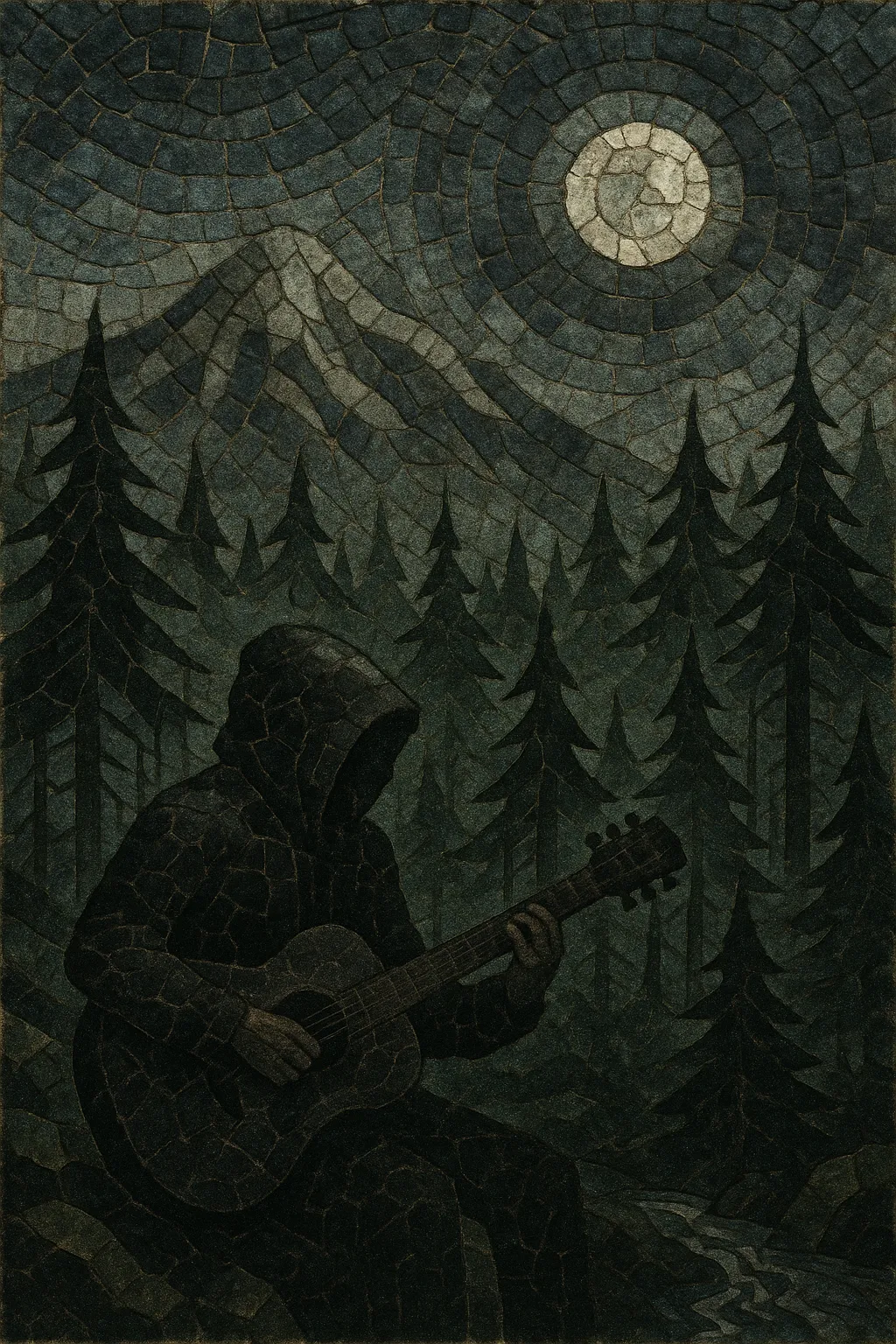
Cascadian black metal is a regional strain of atmospheric black metal associated with the Pacific Northwest of North America, named after the Cascadia bioregion. It emphasizes long, immersive song forms; organic, reverb‑washed guitar layers; and a deep engagement with wilderness, seasonality, and eco‑spiritual or animist themes.
Musically it blends second‑wave black metal tremolo riffing and blast beats with passages of ambient/drone, post‑rock crescendos, and occasional acoustic or folk interludes. Field recordings of rain, wind, streams, and forest ambience are common, and production tends to favor a raw yet warm, “natural” sound over clinical polish.
Cascadian black metal coalesced in the early 2000s within the Pacific Northwest’s DIY milieu, whose geography and subcultural values emphasized self‑sufficiency, environmental consciousness, and a retreat from urban modernity. Agalloch (Portland) had already laid important groundwork at the turn of the decade by blending black metal with neofolk, ambient, and post‑rock atmospherics. Shortly thereafter, Wolves in the Throne Room (Olympia) crystallized the regional sound with expansive, trance‑like compositions, loamy production, and nature‑centered aesthetics. Parallel projects such as Fauna, Skagos, and Velvet Cacoon further established the style’s sonic and thematic profile.
CBM releases commonly feature forest imagery and seasonal symbolism, and lyrics often invoke bioregionalism, deep ecology, animism, and cycles of death and renewal. The sound emphasizes long‑form writing (often 10–20 minutes), layering of tremolo‑picked guitars over droning pedal points, dynamic surges between blast‑driven peaks and hushes of acoustic or ambient texture, and field recordings captured in forests, cabins, or barns. Labels like Profound Lore and Southern Lord, along with artist‑run imprints, helped circulate these recordings beyond the local scene without diluting their DIY ethos.
By the 2010s, CBM’s approach influenced a wider atmospheric and post‑black continuum, normalizing the integration of post‑rock dynamics, ambient interludes, and environmental field recordings into black metal. Bands inside and outside the Northwest adopted its long‑form, meditative writing and eco‑spiritual framing. While the term “Cascadian black metal” remains geographically rooted, its sonic signature continues to inform blackgaze and other atmospheric hybrids across North America and beyond.
Use two or more electric guitars (often in D standard or drop D) to create wide, layered tremolo textures. Pair with bass that sustains pedal tones or simple counter‑motifs, and drums capable of fluid shifts between blast beats, double‑time rides, rolling tom work, and spacious half‑time. Keep a small acoustic kit and consider auxiliary percussion (floor toms, hand drums) for earthy cadences.
Favor natural minor, Dorian, and modal/pentatonic inflections. Write long melodic arcs that evolve gradually, using drones and open‑voiced intervals (fourths/fifths) to create a sense of horizon. Interleave dissonant clusters with consonant resolutions to mimic weather fronts moving through a landscape. Acoustic interludes can use simple fingerpicked patterns and modal drones to reset the ear.
Compose extended forms (8–20 minutes) that progress through waves: ambient/drone introduction → blast‑driven ascent → plateau of sustained tremolo layers → reflective acoustic or ambient trough → final surge or dissolving coda. Tempo can range from 70–90 BPM in ambient sections to 180–220 BPM for blasts. Use long crescendos and diminuendos, letting transitions breathe rather than cutting abruptly.
Capture an organic, roomy sound: moderate saturation, natural reverb, and layered guitars panned wide. Incorporate field recordings (wind, rain, streams, forest fauna, crackling fire) as intros, segues, or beds under clean guitar. Track vocals with distance and air; let the rasp sit slightly behind the guitars for a spectral presence. Avoid over‑editing; minor imperfections can enhance the lived‑in, natural feel.
Employ high rasped or breathy shrieks, occasionally whispered or chanted passages. Write lyrics centered on wilderness, seasonality, cyclical time, ecological grief and renewal, animism, and bioregional identity. Symbolism (rivers, mountains, mist, ash, cedar) helps anchor images to place.

